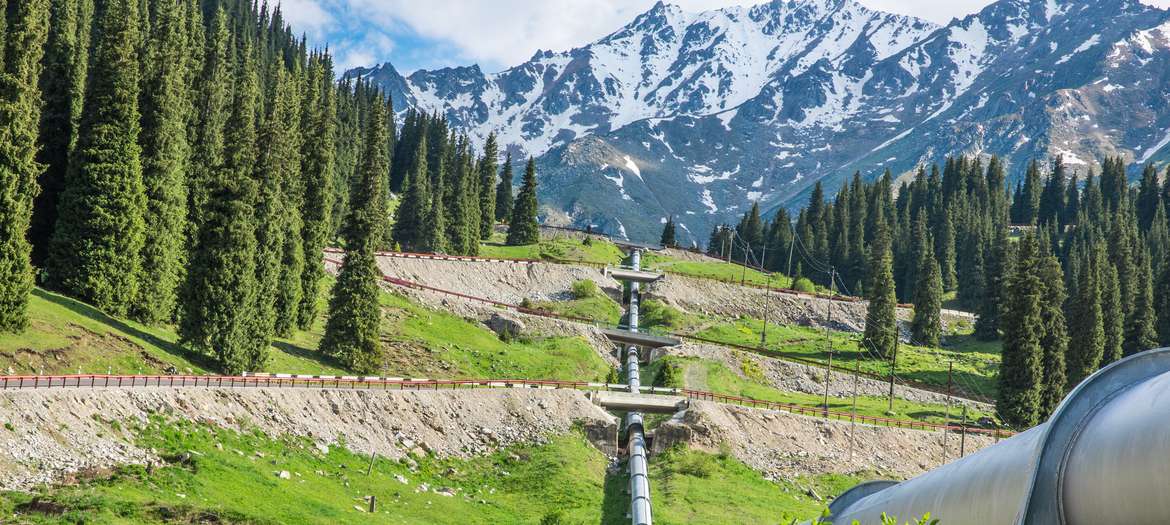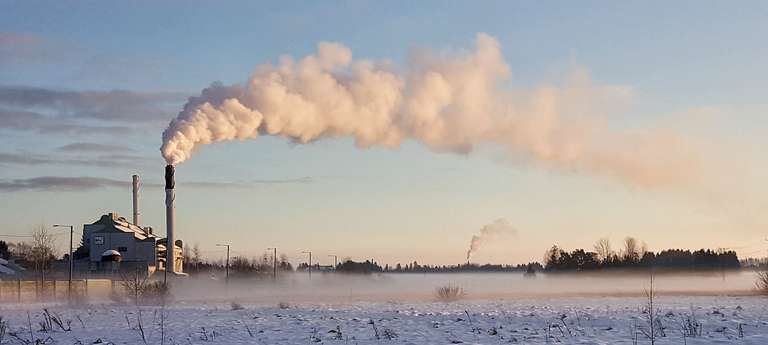SITUATION
Natural gas is transported in pipelines over many thousands of kilometers to destinations around the globe.
The new zero-emission mechanical seal from EagleBurgmann

Natural gas is transported in pipelines over many thousands of kilometers to destinations around the globe.
Even with technically sophisticated solutions such as dry gas seals, methane gas escapes.
The new zero-emission mechanical seal from EagleBurgmann prevents the emission of the greenhouse gas methane during natural gas extraction, transport and processing.
Natural gas is transported in pipelines over many thousands of kilometers to destinations around the globe, both overland and via the seabed. The flow of gas must be prevented from ebbing and drying up. Every now and again, giant compressors, like springs, with the power of about 100 car engines provide the necessary boost. But in the process, methane gas escapes. Until now, at least. The recently developed zero-emission mechanical seal, CobaDGS, from EagleBurgmann uses nitrogen to prevent these harmful emissions. The sealing innovation makes a sustainable contribution to curbing global warming.
Methane is the main component of natural gas and has a much greater greenhouse effect than carbon dioxide (CO2). Dr. Ferdinand Werdecker, Director of Engineering for Compressor Seals at EagleBurgmann predicts: If all the compressors in German pipelines no longer allowed the escape of methane emissions directly into the atmosphere and were instead sealed with CobaDGS, 15,000 tons of direct methane gas emissions could be avoided annually. This corresponds to 1.3 million tons when converted to carbon dioxide (CO2), which is equivalent to the annual CO2 emissions of around 600,000 private households. The new sealing technology could save four times this amount throughout Europe, and even fifty times the amount worldwide – equivalent to more than 63 million tons of CO2 per year.
How does EagleBurgmann’s sustainable sealing solution work? The compressor’s power is transmitted via a shaft to a blade wheel driving the flow of natural gas in the pipeline. The shaft sleeve through the compressor housing must be sealed. But this has always resulted in leakage – and even with technically sophisticated solutions such as dry gas seals, methane gas escapes.
Dry gas seals have a stationary and a rotating ring, whose contact faces almost touch. Less gas escapes if the gap is narrower, meaning the transport of gas is more cost-effective for the operator and the negative impact on the environment is less dramatic. The CobaDGS uses nitrogen to seal even this remaining gap, which is only two or three thousandths of a millimeter wide. The somewhat higher pressure of the “nitrogen barrier” prevents gas from flowing through the gap and escaping.
“We’ve advanced this basic principle to work at high operating pressures of up to 160 bar for the main seal. We use it for most of the compressors,” says Werdecker. A further benefit: Thanks to gas lubrication, the CobaDGS operates almost wear-free and, with proper maintenance, its service lifetime is virtually unlimited.

A boiler circulation pump in a power plant conveys very hot and pressurized water. The pump has no cooling jacket, which increases the risk of a thermosiphon effect.

Mechanical seals are not always the best choice. In roller dryers used in the production of pharmaceutical powder, abrupt shaft deflections during processing led to increased seal wear. Operation was maintenance-intensive and prone to faults.

The Etzel oil and gas cavern system is situated southwest of Wilhelmshaven, not far from the North Sea coast. A vast salt dome houses the more than 70 caverns which store crude oil and natural gas at depths between 900 and 1,700 meters. Etzel is integrated in the northwest European oil and gas pipeline network and makes a significant contribution to the safe and reliable supply of gas to Germany and all of Europe.

The new zero-emission mechanical seal from EagleBurgmann prevents the emission of the greenhouse gas methane during natural gas extraction, transport and processing.

The reliability of centrifugal compressors in gas grids are of the highest social and economic importance for network operators. Compressor performance and availability are closely related to the effectiveness of sophisticated compressor shaft sealing technology. Here, EagleBurgmann developed a new sealing concept which ensures better compressor availability: the coaxial separation seal CobaSeal.

They are often overlooked but play a crucial role when it comes to sustainability: modern and complex sealing solutions. Digital technologies now enable remote monitoring, helping to increase their service life and therefore reduce their ecological footprint.